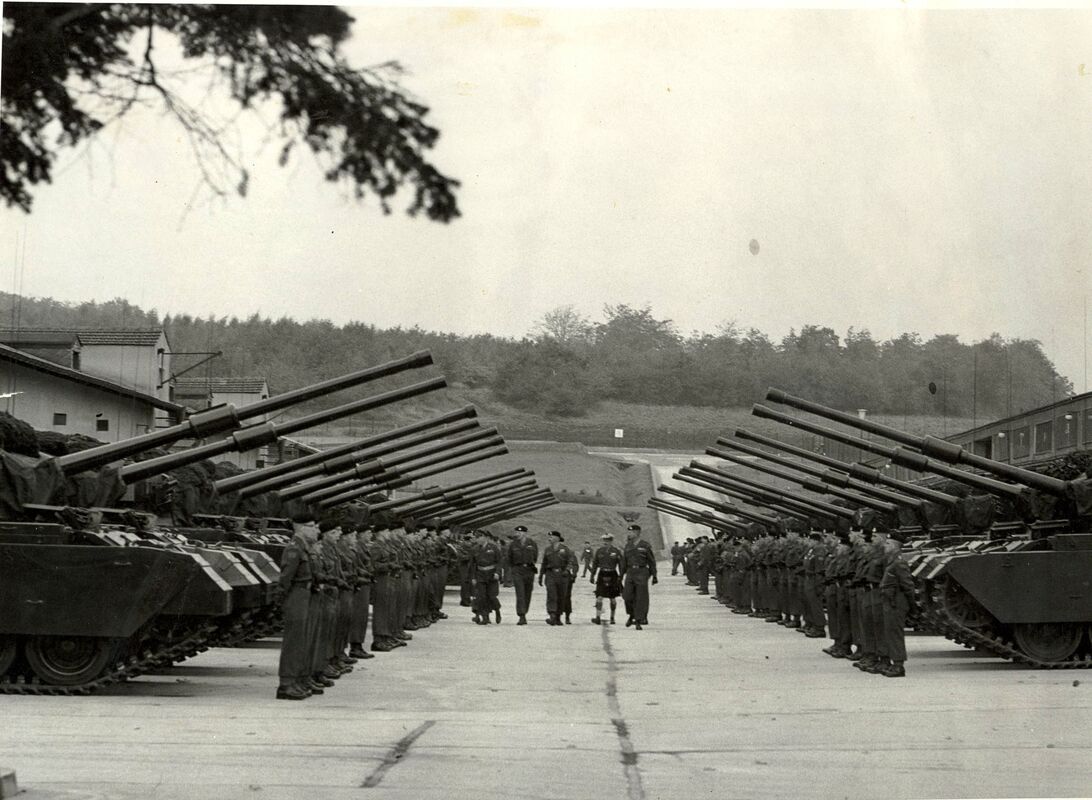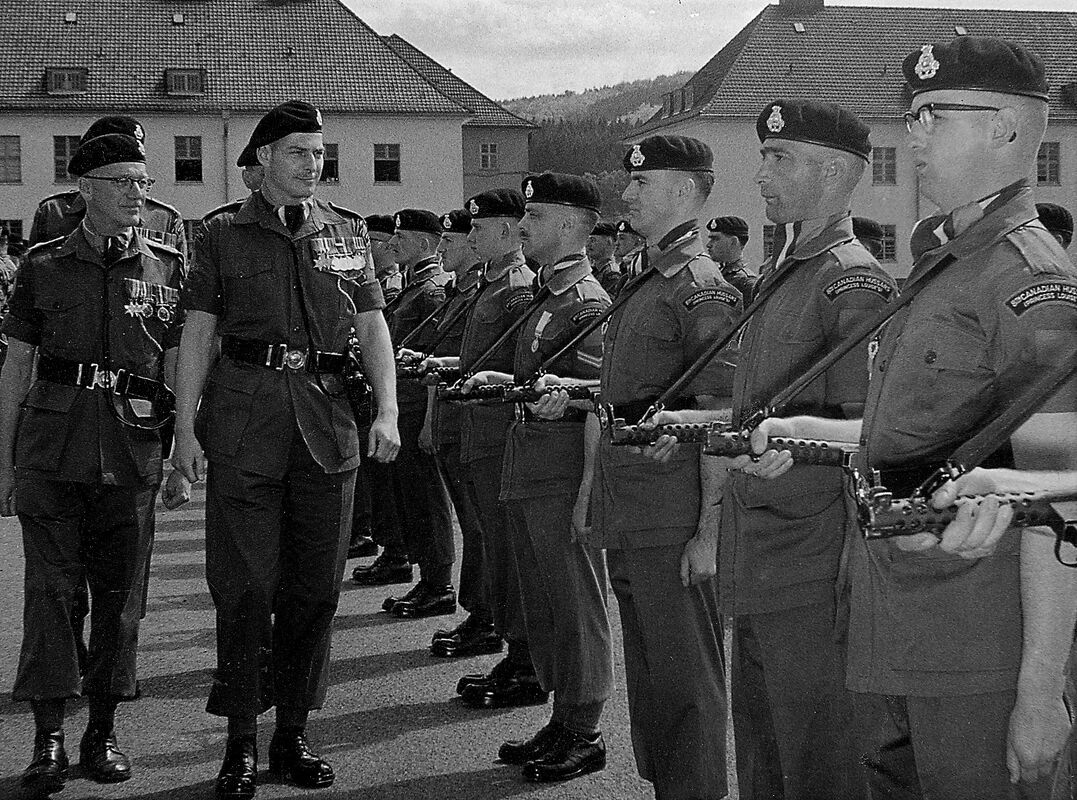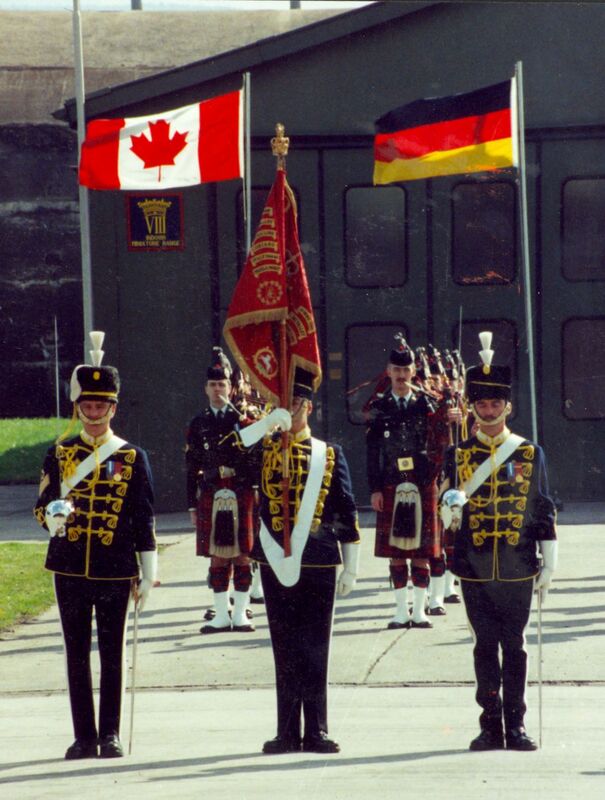From the War Diary of 03 -05 May, 1945, this is what is written.
3 May 45. Thunder showers predominate throughout the day. The regiment chiefly spent the day reorganizing personnel and generally getting sorted out after the recent operation. The tank crews enjoyed a much longed for shower and change of clothing. Capt R.H. Dunn and Lt J.J.M. Scovil left for England for a period of duty as instructors.
Major G.R.H. Ross was ordered to proceed to GODLINZE (3831) and take command of a force to be designated the “ROSS” Force. It was composed of the following: “C” Squadron 8NBH who were moved from HEVESKES (4824) and a Dutch Independent Company. The task was to patrol the area and to act as an anti invasion force as the enemy were still in strength on the FRISIAN ISLANDS. By dusk the force was complete and situated as ordered. Attached as appendix is the order denoting the boundaries and and sectors of the “ROSS” force.
Holland 1/100,000 4 May 45. The weather was very changeable with heavy showers GRONINGEN W Sheet M1 throughout the day. 2 Officers and 30 Other Ranks left at 0300 hrs MR 218067 on privilege leave to the UK along with 4 Other Ranks on EMDEN L1 rotational leave to Canada. Lt- Col J. W. Eaton held an “O” GRONINGEN Sheet M1 E Group at 1330 hrs, attended by all squadron and echelon
commanders at which he stated that the present role of the division was an occupational force with the task of holding and patrolling the coast line from the Ems River to Ijssel River, our regimental task until the 6 May 45 being to patrol the sector of coast from 383398 to 40296 occupied by the “ROSS” Force. Lt–Col J. W. Eaton stated that all captured staff cars in the regiment must be registered and controlled by an officer of field rank. “V” Day celebrations will be supervised as much as possible to avoid accidents. Due to a number of tanks being bogged down and left separate from the squadrons in the last actions, considerable difficulty arose over delivery of rations to these crews. A meeting of the 2 ICs of squadrons is to be held by the Quartermaster to discuss the problems of rations. The squadron commanders were asked for further nominations of awards resulting from the last actions. “A” and “B” Squadrons spent the day doing maintenance, painting and general refitting of tanks. Capt J.W. Stobbart, Auxiliary Services, has arranged to show a film twice a week for all ranks. At 2230 hrs the long awaited for message was received from Rear 5 Cdn Armd Bde, “Cancel all offensive operations, cease fire at 0800 hrs 5 May 45”. The “ROSS” Force was situated as follows: one troop “C” Squadron and one platoon Dutch Independent Company at SPIJK (4033) and one troop “C” Squadron and one platoon Dutch Independent Company at ZIJLDIJK (3434). The remainder and force HQ were stationed at GODLINZE (3831). The enthusiastic Dutch were allowed to do all patrols under supervision of the “C” Squadron troop leaders concerned. The patrol reports were nil. A dance was held by the officer’s mess during the evening.
05 May 45. The day dawned amidst scattered showers with a cold, strong breeze blowing. The day was chiefly spent by the maintaining of vehicles and by personnel having their clothing cleaned etc., and the resumption of the out of action schedule. The “ROSS” Force spent a quiet day. All reports of any unusual activity being received. During the afternoon the “ROSS” Force was relieved by the BCDs and “C” Squadron returned to their former quarters at PATERSWOLDE (2106). A regimental officers mess is now functioning. As a result of the two operations many new faces were amongst the Officers and men.
After everything was said and done, the Regiment would spend another eight months in Europe before returning home to Sussex in late January 1946.
Sgt. Don Abbott
8th Canadian Hussars (Princess Louise’s)
Historical Archives NCO
Canadian Forces Europe and the 8th Canadian Hussars By Matthew Gamble
While in Germany, the Regiment was to keep in top shape, as there was a very real danger that the Cold War could turn hot at a moments notice. Soldiers conducted intense training, and polished their skills in tank gunnery, camouflage, small arms, and crew training. The Centurion tanks were pushed to their limits, with a few almost being lost in a bog on one occasion. Meanwhile, various military exercises were conducted with NATO allies, and such excursions often brought the Hussars into the streets of German towns and villages. Additional time was filled with sports and competitions including boxing, volleyball, and softball. The Regiment returned to Canada in 1962, but three years later, 'C' Squadron would return to Germany to provide reconnaissance for 4 Canadian Infantry Brigade Group until 1970.


